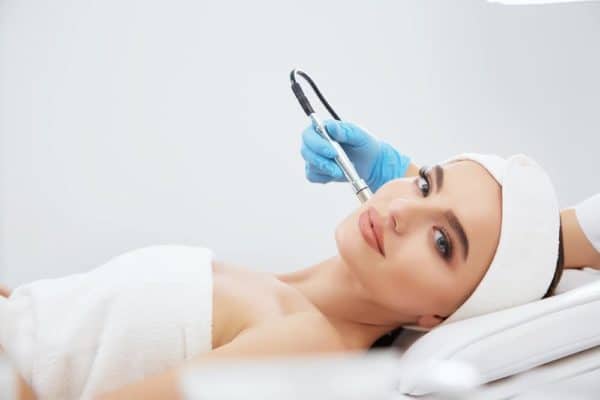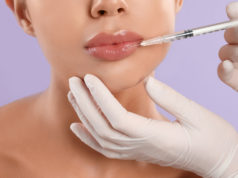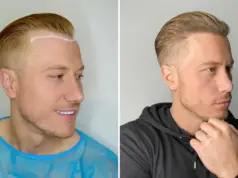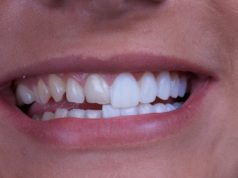What a wonderful world it is that you’re living in! Did you know that there are so many things that you can do to your skin these days that can make you look and feel ageless sooner for longer?
If you honestly feel that you’re ready to take the next big leap when it comes to skincare then, it’s about time you get educated about the breakthrough therapeutic procedures for the skin.
What Are The Best Procedures For The Skin?
Well, the scare that was caused by the dramatic, not-so-pretty changes in appearance brought about by many horror stories about plastic surgeries went so wrong has elicited a welcome shift to less invasive skin procedures.
What better reason to check out these so-called non-invasive and minimally invasive procedures than the fact that these carry much less risks that are all non-life threatening, The big “Oh?” is that these are scientifically proven to be effective in delivering better looking, more youthful appearance for your skin.
Here are just some of the most notable breakthrough therapeutic procedures for the skin that you need to learn more about right here, right now:
Microdermabrasion:
This procedure was first offered some time in the late 80’s to early 90’s so it isn’t really a breakthrough but, since it is still considered a high performing skin care procedure, it deserves to be on this list. Microdermabrasion for acne scars is one of the best recognized effective uses of this procedure. Although, it is generally not recommended for use on skin still infected with acne-causing bacteria.
How It Works: This procedure is generally of two kinds— diamond peel and crystal peel. In diamond peel, your skin specialist will use a device that has a fine, abrasive tip to slough off your skin. A crystal peel, on the other hand, involves scattering powder-like aluminum oxide crystals across your skin. These then rub against your skin, causing your skin’s damaged top layer to peel off.
Best Uses: treatment of acne scars, skin smoothening, scar healing, hyperpigmentation marks, correction of fine lines
Risks/Side Effects: Abrasions on the skin, depending on skin sensitivity and skin technician.
Downtime: None but, when abrasions appear, it may take at least two days up to a week for your skin to clear out.
Radio Frequency Therapy:
It does remind you of your Fifth Grade Science, eh? Well, to refresh your memory, radio frequency is what runs your AM/FM radio, and the key source of energy that transmits them are radio waves.
How does it benefit your skin? It definitely won’t make your skin hum a beat but, it is designed to bring better harmony to skin cells situated deep within your skin.
How It Works: Treatment specialists use a device that will produce RF waves. This energy is sent vibrating deep down into your skin where it stimulates the faster rate of collagen production at higher volumes. That capability makes it great at improving your skin’s elasticity and has been scoring high at tightening skin.
Best Uses: saggy skin, aging eye skin, skin tightening
Risks/Side Effects: None.
Downtime: None.
Oxygen Facial:
When you feel that your face brush or spa’s vacuuming is already too boring for your skin that it doesn’t seem to be responding to these treatments anymore, it’s time for you to experience the skin rejuvenating power of an O2 Oxygen Facial. This procedure is based on the principle that more oxygen circulating in your skin will help power up several mechanisms that leave your skin dewier and silkier on the surface.
How It Works: A device is used to force oxygen into your skin’s pores. Before this device is used, your skin care specialist will likely give you a professional exfoliation first and, possibly, steaming as well to clear your pores of impurities and open these up in preparation for the O2 infusion.
Best Uses: skin rejuvenation, skin smoothening, soothing skin redness and other chronic manifestations of skin inflammation.
Risks/Side Effects: None.
Downtime: None.
Ultrasonic Therapy:
Just when you thought that ultrasound machines are best used for revealing the gender of a baby in the tummy, this time around, the use is not just for moms-to-be but, for everybody.
How It Works: Like RF, energy in the form of vibrations is passed from an ultrasonic device to your skin. The high-frequency sound waves then travel deep into your skin and, as it does, it gets to stimulate the skin cells on its path.
That stimulation improves the energy available to your cells, causing various cellular level mechanisms for skin repair and rejuvenation to become more efficient and effective at delivering desirable results. Ultrasonic therapy is also commonly combined with other anti-aging treatments to improve the efficacy of topically applied treatments, including anti-aging solutions.
Best Uses: skin lift and wrinkle reduction
Risks/Side Effects: Possibly ultrasound toxicity but which is unlikely to occur when availed from a trained specialist or technician.
Downtime: None.
Chemical Peels:
Like microdermabrasion, this class of procedures are far from new but, since chemical peels can be so effective in promoting gorgeous skin, these procedures deserve a spot on this list too. Perhaps the closest to a breakthrough these procedures can get is that newer classes of chemicals or newer concentration and combinations that improve the results that they can deliver to beautify your skin.
How It Works: Your skin care specialist will help you determine the kind of peel and the type of chemical that will be used. Your options will depend on your desired results, your skin type (most especially if you are aware that you have sensitive skin, any skin allergies or sensitivities, and even your tolerance to pain. In general, you the procedures available are either mild, moderate or severe. Your skin care specialist will typically begin the procedure by cleansing your skin and, perhaps, opening up your pores with a steam.
Best Uses: acne and breakouts, treatment of wrinkles, fine lines and age spots, improvement of sun damaged skin, improve scarring, improve skin tone and clarity, and promote smoother skin.
Risks/Side Effects: Permanent skin damage, inflammation, skin darkening, permanent loss of pigment.
Downtime: Depending on the intensity of chemical used, downtime may last for 2 days up to two weeks. During which period, you should closely follow your skin care specialist’s advise for aftercare.
Sonoillumination:
Now, this is breakthrough at its finest. Still, in its development and testing stage, this procedure with high clinical application potential was presented by University of Missouri candidate for the doctoral degree, Paul J.D.
Whiteside and his team during the American Society for Laser Medicine and Surgery in April 2017. The goal of the team was to improve the accuracy of lasers in treating skin imperfections while, at the same time, reducing the risks associated with laser skin treatments, including eye damage.
How It Works: A device was developed that combines ultrasonic pulsation and laser to improve the quality and appearance of skin. The researchers say that this new skin care technology will complement any existing laser skin treatment.
Best Uses: By stimulating skin cell activity deeply and through broader treatment areas while keeping treatment precise at the same time, this skin procedure is expected to become applicable for treating a wide range of skin care issues. Early reviews are projecting that this new innovation in skin care will make laser suitable for use on a wider range of skin types.
Risks/Side Effects: As clinical trials are pending, there has yet to be any declaration of risks and side effects associated with this skin treatment procedure.
Downtime: As this procedure is expected to deliver a safer mode of laser skin care procedure, downtime should not be worse than current laser-based procedures which ranges from minimal to none at all.
Gene Therapy:
Among all the procedures on this list, this one has the most intense and most beneficial application. As yet, this procedure has been used to treat people, including children, with inherently weak skin conditions, including a skin condition called, junctional epidermolysis bullosa which spreads wound-like skin lesions on the skin over time.
How It Works: It requires skin grafting where skin specialists harvest healthy skin cells and implant in on affected areas. The procedure is continually repeated over several sessions until all affected areas are covered.
Conclusion
For most people, these procedures may sound driven by vain and earthly desires. For some, however, these procedures can spell the difference between heaven or hell. At the end of the day, you make a choice whether to harness these technologies or not — and, as you have your own reasons, you cannot be blamed for choosing so. Choose wisely and know exactly what you’re getting yourself (and your skin) into.












